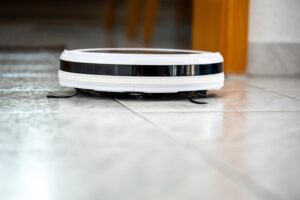Are you considering using your Roomba to clean areas with wet floors? Have you ever wondered if it’s safe to let a Roomba navigate through spills or wet surfaces? In this blog post, we will delve into the intriguing question of whether a Roomba can effectively operate on wet floors.
We will explore the capabilities of Roomba models and discuss the potential risks and limitations associated with allowing a Roomba to venture onto wet surfaces. Additionally, we’ll provide tips on how to protect your Roomba from water damage and share alternative cleaning solutions for wet areas.
Join us as we uncover the possibilities and constraints of using a Roomba on wet floors. Can a Roomba handle accidental spills? What are the consequences of exposing a Roomba to moisture? Is there a way to adapt a Roomba for wet floor cleaning? Get ready to have all your questions answered as we unravel the mysteries of Roomba’s compatibility with wet floors.
Understanding the Limitations of Roomba on Wet Surfaces
When it comes to cleaning your home, the Roomba is a convenient and efficient tool. However, one common question that arises is whether the Roomba can handle wet floors. While the Roomba is designed to handle a variety of floor types, it is not equipped to handle wet surfaces.
Using a Roomba on wet floors can potentially damage the robot vacuum. The sensitive electronic components and the motorized parts are not designed to come into contact with water.
Additionally, the wheels of the Roomba may slip on wet surfaces, reducing its ability to navigate and clean effectively. As a result, it’s important to be mindful of the limitations of the Roomba when it comes to wet floors.
In conclusion, while the Roomba is a versatile cleaning tool, it’s essential to understand its limitations, especially when it comes to wet surfaces. This knowledge can help you avoid potential damage to your Roomba and ensure that it continues to function effectively for years to come.
Precautions for Using Roomba on Wet Floors
When using a Roomba on wet floors, it’s essential to ensure that the area is relatively dry before initiating the cleaning cycle to prevent potential damage to the robot vacuum. Additionally, it’s important to inspect the floor for any large spills or standing water that could pose a risk to the Roomba’s electronic components.
Allowing the wet area to air dry or using a dry mop to absorb excess moisture can help minimize the risk of water damage to the Roomba. Furthermore, it’s advisable to monitor the robot vacuum closely during operation on wet surfaces to promptly address any issues that may arise.
Regularly checking and cleaning the Roomba’s sensors and brushes can help maintain its performance and prevent potential malfunctions when operating on wet floors. Moreover, positioning barriers or using virtual walls to restrict the Roomba’s access to excessively wet areas can help mitigate the risk of damage.
It’s crucial to follow the manufacturer’s guidelines and recommendations regarding the use of the Roomba on wet floors to avoid voiding the warranty or causing irreparable damage to the device. Additionally, considering alternative cleaning methods, such as manual mopping, in areas prone to excessive moisture can help prolong the Roomba’s lifespan and functionality.
How Does Moisture Affect Roomba’s Performance?
Moisture can significantly impact the performance of a Roomba, as the robot vacuum is not designed to handle wet surfaces. Excessive moisture can damage the internal components of the Roomba, leading to malfunctions and potential safety hazards.
Additionally, water or spills on the floor can affect the Roomba’s traction and navigation, causing it to slip or get stuck while cleaning. This can result in incomplete cleaning cycles or damage to the robot’s wheels and brushes.
Therefore, it’s important to understand that exposing a Roomba to wet floors can void its warranty and lead to costly repairs. It’s crucial to take proactive measures to prevent moisture from affecting the Roomba’s functionality and longevity.
Exploring Alternatives for Cleaning Wet Floors with Roomba
When faced with wet floors, it’s important to consider alternative cleaning methods for maintaining a clean home. One option is to use a traditional mop and bucket to manually clean the wet areas, ensuring thorough removal of moisture and dirt. Another alternative is to use a specialized wet vacuum cleaner designed to effectively clean and dry wet surfaces, providing a suitable solution for managing moisture on floors. These alternatives offer efficient ways to address wet cleaning needs that may not be suitable for a Roomba. Additionally, implementing these methods can help prevent potential damage to the Roomba and ensure the longevity of the device.
Conclusion: Is Using Roomba on Wet Floors Worth the Risk?
Using a Roomba on wet floors poses risks to the device’s functionality and longevity. The moisture can damage sensitive components and void the warranty, potentially leading to costly repairs. However, if you must use a Roomba on wet floors, taking precautions such as thoroughly drying the area and using a compatible model designed for wet cleaning can help mitigate some of the risks.
Ultimately, the decision to use a Roomba on wet floors comes down to weighing the convenience of automated cleaning against the potential risks to the device. It’s important to assess the specific circumstances and consider alternative cleaning methods to ensure the longevity of your Roomba.

